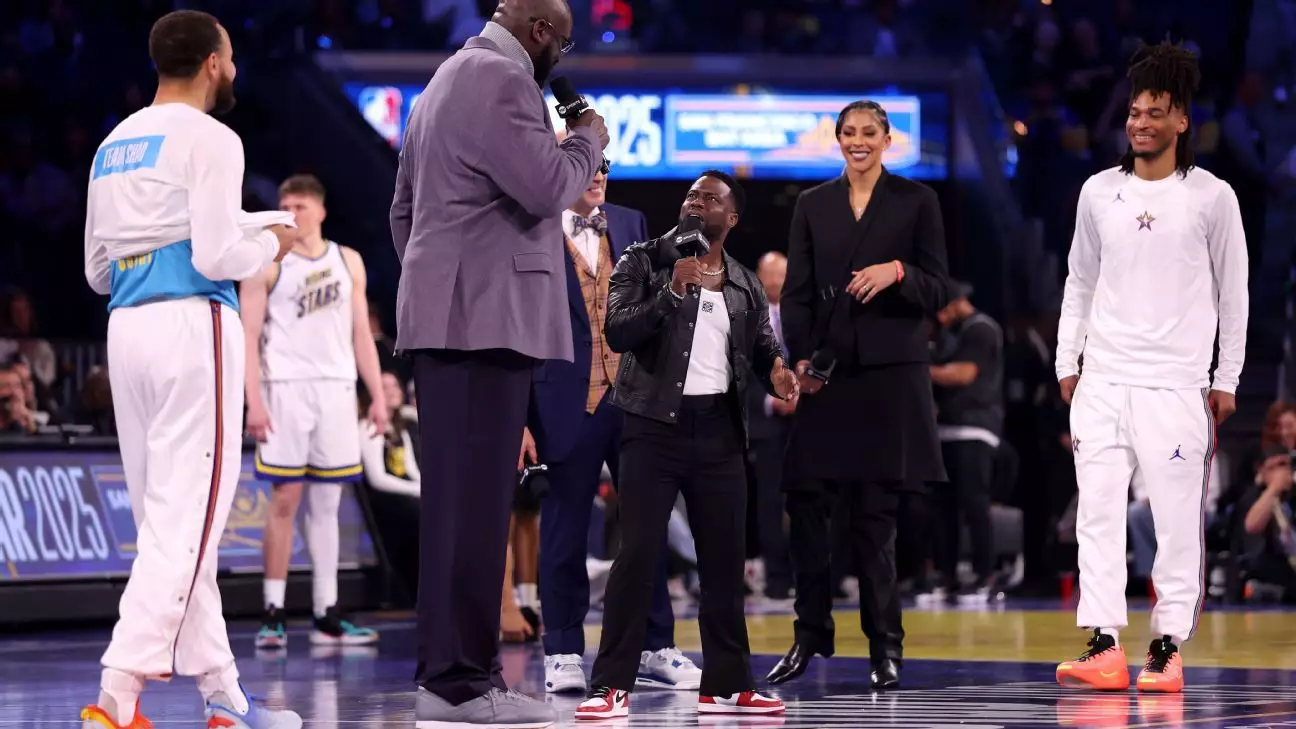The NBA All-Star Game, an annual exhibition that showcases the league’s top talent, recently underwent a notable transformation in its format. This year, the traditional East vs. West matchup was replaced by a dynamic four-team, single-elimination tournament. While innovation might be the intention, the execution left room for criticism among players and fans alike.
The tournament involved three teams drafted by TNT’s “Inside the NBA” analysts Charles Barkley, Kenny Smith, and Shaquille O’Neal, with the fourth team representing Candace Parker’s Rising Stars from Friday’s event. Each team was tasked with reaching a target score of 40 points per round, a move designed to inject excitement and competitiveness into the exhibition. Yet, player reactions suggested that the thrill of the game was somewhat diluted by excessive breaks and interruptions.
Trae Young, a standout player for Chuck’s Global Stars, was vocal in his dissatisfaction. His sentiments echoed a sentiment shared by several players: the frequent stoppages, often filled with entertainment segments, detracted from the competitive spirit of the game. “The games were so short,” Young explained, indicating that the structure seemed more focused on prolonging airtime rather than enhancing the playing experience. This perspective raises an important question: in the effort to create a more engaging broadcast, are the league and its organizers inadvertently sacrificing the essence of the game itself?
The All-Star Game has long been a blend of sport and entertainment, a celebration of talent where the stakes are more about enjoyment than winning. However, this year’s format appeared to tilt the scale further towards entertainment, illustrated by a nearly 20-minute intermission during the championship game to honor the TNT broadcast team. Such long breaks were criticized by players who sought a more fluid competition.
Jaylen Brown pointed out the incongruity of intended physical play alongside extended pauses. “It’s definitely not ideal,” he remarked, acknowledging both the fun and the frustrations embedded in the new structure. Players like Shai Gilgeous-Alexander recognized the improved competitiveness but remained wary of the interruptions. “It was a little bit more towards the competitive side tonight,” he noted, illustrating a nuanced view that welcomed the competitive elements even amidst dissatisfaction.
Stephen Curry, who garnered the All-Star Game MVP title following a commendable performance, provided insights into the motivations behind the changes. He expressed a recognition of the need for fresh energy within the All-Star festivities. “We needed some new life, new juice in the game,” Curry said, invoking a desire for innovation that not only captures the excitement but also respects the players’ time and dynamism on the court. In a similar vein, Kevin Durant acknowledged that the new format took “some getting used to,” underscoring the challenges faced while adapting to structural changes.
Draymond Green, however, added another layer to the conversation by criticizing the inclusion of first- and second-year Rising Stars in the All-Star format. His assertion that he needed to work hard to earn his spot on the All-Star stage, only to see younger players participating, reflects a tension between tradition and modernity in player selection and highlights the ongoing debate regarding the meritocratic principles that have long been integral to the league.
The absence of notable stars such as LeBron James, Giannis Antetokounmpo, and Anthony Edwards, due to injuries, cast a shadow over the tournament. The void created by their absence was palpable and had implications for the game’s energy and appeal. Fans and players alike felt that the lineup lacked the typical star-studded vibrancy, which may have muddled the overall experience of an event that is generally celebrated for showcasing the league’s elite.
In its inaugural iteration, the new NBA All-Star Game format sought to marry innovation with tradition. While the intentions behind the changes were clear—enhancing competitiveness and making the game more captivating—the implementation sparked varied responses. The players’ critiques highlight a crucial awareness of what makes the All-Star Game a beloved event in the NBA calendar: the balance between competition, entertainment, and respect for the game that has captured hearts for decades. Moving forward, it remains to be seen how the league will refine this format, integrating player feedback while maintaining the excitement that fans crave.

